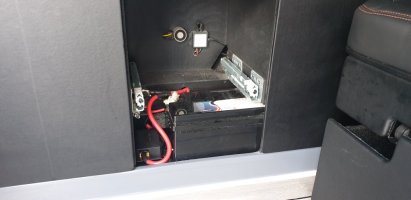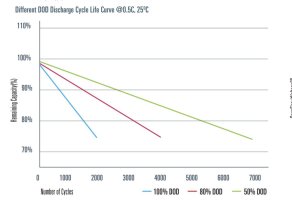I have 2 of the eco-worthy fitted in my van. 
John.
John.
He's in the US so by 29 he means 29 Farenheit - which is -1.5 Celsiushmmm. . . . that dont look good. (EcoWorthy 100Ah)
Lifepo4s dont like high temps. - but something else must have been going on here?
im think over charge or over discharge,
View attachment 225373
...

Off Grid DIY Solar | Independent 12v for shurflow pump | Facebook
Independent 12v for shurflow pump. Almost lasted a year. All I can think is it was 29 this morning when first light hit the panelwww.facebook.com
...

Thanks @roadtripper - yes, I meant Tayna not TanyaIf it's Tanya as in the battery suppliers they're reasonably well known and from the price they don't seem cheap options...

TN POWER Lithium Leisure Batteries - Leisure Batteries
Tayna Batteries supply all types of Leisure Batteries. Browse our full range of TN POWER Lithium Leisure Batteries here. We aim to be the cheapest supplier of TN POWER Lithium Leisure Batteries in the UK.www.tayna.co.uk
I think the data sheet is here

Got a pic of them?Just going through my conversion and cataloguing all the electrical components. Pleased to see all the charging components are Victron and the inverter is Renology (both respected names that are often recommended on the forum), but was surprised/disappointed to see the converter had used used 2x Tanya LN Power 110A LiFePO4 batteries. Was hoping they'd used one of the well-known battery brands, but never heard of Tanya LN Power. Anyone heard of them/ used them? Are they any good?



More a case of the inverter being overrated for what we need, rather than the battery bank being underrated. SOC not yet been below 75%.3kw inverter from two 110Ah lifepo 4 batteries might be optimistic?
I don't think that there is anything wrong with TN Power batteries. I've been using them for 3 years on my caravan and they have the basic BMS protections that you would expect expect from a decent lifepo4 battery.Not good pics, but here we go...
View attachment 226150View attachment 226152 View attachment 226151
Charged with...
12v loads...
- 300W flexible PV panel (brand - TBD)
- Victron Energy SmartSolar MPPT 75|15 Charge Controller
- Victron Energy Orion-Tr Smart 12|12-30 (360/430W) Non-isolated
- Victron Energy Blue Smart 12|15 (1)
240v loads (Renogy 3000W PSW inverter for off-grid use (that I just discovered is surge rated to 6000W
- 3x dimmable LED Spots (kitchen)
- 4x dimmable LED Spots (tailgate)
- 3x LED Spots (pop-top)
- 2x LED white strip lights
- RGB LED strip mood-lighting
- Mobile phone charging
- Webasto compressor fridge (49L Marine drawer)
- Electric R&R bed
))…
- Fohen hot water boiler (power rating TBD - user manual is next to useless!)
- Tablet / laptop charging (65W)
- Portable induction hob (variable, max 2.1KW)
- Air fryer (1.3 KW)
That's good to hear @Samro, thanks. Given the other quality components I would have been surprised if they weren't at least decent-ish.I don't think that there is anything wrong with TN Power batteries. I've been using them for 3 years on my caravan and they have the basic BMS protections that you would expect expect from a decent lifepo4 battery.
They were cheap and someone may come along and criticise them, but I've been quite happy with the way that they've performed over the last three years.




Yes, I noticed that from the info @roadtripper referenced, but I'm not aware of anything that would prevent charging below 0C.Basic BMS yes. But no "low temp charge protection".
It's potentially dangerous, see my post here and then scroll up to see the battery. I strongly suspect this was solar charging below freezing.If battery temp was below 0C during the day, is this small amount of solar charging likely to damage the batteries? Are we talking reduced capacity, reduced life expectancy or a completely shagged battery?

